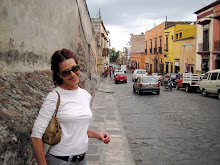Lavender for Health and Beauty
Lavender, a flowering herb of the mint family, has been used throughout history for the past 2000 years. The Ancient Egyptians used it in their mummification processes. The name Lavender comes from the Latin "lavare" (to wash); "Livendulo" (livid or bluish) was used by the Romans.
Lavender was referred to as Spikenard in the Bible. Mary used it on the baby Jesus. She also anointed Jesus with lavender (John 12:3) when she was making him ready for the crucifixion.
These ancient cultures were all well-versed in the uses of lavender in aromatherapy and for medicinal purposes, and this knowledge was used later in the Renaissance to protect against infection during the Plague.
The cultivation of Lavender for commercial purposes began in the Victorian Era. Queen Victoria wanted all her Ladies-in-Waiting to scent themselves with Lavender along with everyone and everything else around her! Lavender was strewn on castle floors so that each step would release the sweet scent. This caused a craze for lavender in England. Lavender was grown in every herb garden. Street vendors sold bunches of Lavender everywhere. Lavender was used in cleaning, laundry, perfume, and personal care products as well as medicinally.
Lavender is native to the Southern Alps and the Mediterranean, and different varieties grow wild and are cultivated throughout Provence. In the 16th century, the Provençal peasants produced lavender oil to heal wounds and expel intestinal worms.
True Lavender (Lavendula angustifolia) thrives in the chalky soils and hot, dry climate of the higher altitudes of Provence and was picked systematically at the end of the 19th century. At the beginning of the 20th century, fields of lavender were first planted at altitudes above 2300 ft. Since True Lavender grows best at over 2300 ft, a hybrid, Lavandin, was developed for cultivation at lower altitudes.
True Lavender has the most subtle essential oil and is highly sought after by perfume makers and laboratories. Spike Lavender (Lavandula Latifolia) has wide leaves and long floral stems with several flower spikes. Hybrid Lavender (Lavandin) is obtained from pollination of True Lavender and Spike Lavender, making a hybrid that forms a highly-developed large round cluster. French Lavender (Lavendula stoechas) is a wild lavender that grows throughout Provence and is harvested for perfumery.
The distillation is done in a steam alembic, with the dry lavender steamed in a double boiler. The essential oils are extracted from the lavender by the water vapor and are passed through the cooling coils of a retort. The condensation provides the final mixture of essence and water. A ton of dry lavender passes through the alembic in about 30 minutes. Lavandin produces from 55-85 lbs of essence, and True Lavender produces from 10-20 lbs, but of a better quality.
Some of the larger cultivated lavender fields are found in the Alpes-de-Haute-Provence, including on the slopes of the Lure mountains, near St. Etienne-les-Orgues, and on the Sault plateau in the eastern Vaucluse. Lavender distilleries are also located in the Alpes-de-Haute-Provence and eastern Vaucluse.
Lavender is harvested from July to September, when the hot summer sun brings the essence up into the flower. The harvesting is done with more and more automation, but the older fields with narrow rows are still picked by hand. The lavender is dried for 2 to 3 days before being transported to the distillery. Another method was to move a small still from field to field during harvesting, and process the lavender immediately upon picking. Whether immediate or with dried lavender, there were "mobile" stills, and later, small stills were built at many of the fields.
Flowers and leaf-stalks can be dried for perfuming bed-linen and to keep moths away from your clothes. Lavender essence is used commercially in the perfume, soap and pharmaceutical industries.
Dried lavender is packaged in small cloth sacks and sold worldwide. Dried lavender is also used for cooking and for herbal cures.
The benefits of Lavender in skincare are vast. Lavender oil contains antiseptic and antifungal properties and has been used to treat various skin disorders such as acne, wrinkles, psoriasis and other inflammations. Lavender is good for both normal or dry skin. Cosmetically, it appears to be a cell regenerator. It prevents scarring and stretch marks and reputedly slows the development of wrinkles. It also heals cuts, wounds, burns, sunburns and skin infections.
Commonly used in aromatherapy, its essential oils can be used alone or mixed with other oils to be applied to the skin. The many health benefits of Lavender essential oil include easing the nervous system, enhancing blood circulation and treating respiratory problems.
Lavender is primarily used in connection with insomnia, anxiety, depression, and mood disturbances. Many recent and past studies show lavender’s effectiveness in producing calming, soothing, and anticonvulsive effects in those who use it. Of several fragrances tested by aromatherapy researchers, lavender was most effective at relaxing brain waves and reducing stress. Lavender also treats indigestion, including colic, it boosts immunity and is widely thought to be a great insect repellent, appetite stimulant, immune system stimulant and aphrodisiac.
Lavender is truly Nature's miraclulous healing plant. The possibilities are endless...



0 Comments:
Post a Comment
Subscribe to Post Comments [Atom]
<< Home